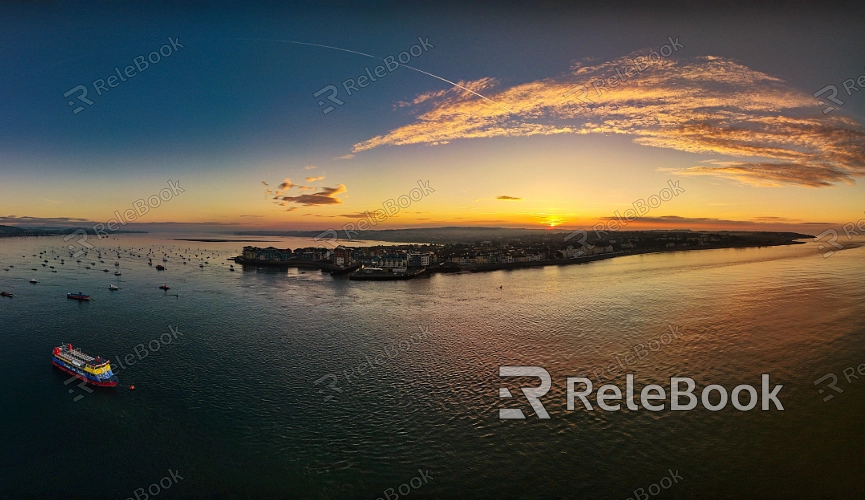How to Reduce Noise in HDR Images
In the fields of architectural visualization, visual effects, and product design, HDR images are widely used. However, these images often suffer from noise issues, which can affect the final rendering quality. The noise in HDR images can stem from various factors such as underexposure, sensor noise, or improper handling during post-processing. This article will explore effective strategies for reducing noise in HDR images using popular 3D software like Blender, 3ds Max, Cinema 4D, and Maya, and provide some practical tips.

1. Optimize Light Sampling Settings
The settings for light sampling play a crucial role in noise generation when rendering HDR images. Inadequate sampling or uneven distribution can result in noticeable noise in the image.
Increase Sampling Count: Raising the number of samples in ray tracing can effectively reduce noise, though it may increase rendering time. The quality of the image, however, will be significantly improved. Software like Blender and 3ds Max allows users to adjust sampling parameters within the rendering settings. It’s advisable to select an appropriate sampling count based on the complexity of the scene.
Enable Adaptive Sampling: Adaptive sampling automatically adjusts the number of samples based on the complexity of the image, helping to reduce unnecessary computation while maintaining image quality. Cinema 4D and Maya support adaptive sampling, which can shorten rendering times and reduce noise.
2. Adjust Exposure and Color Mapping
Noise in HDR images can sometimes be attributed to overexposure or underexposure. Properly adjusting exposure and color mapping can help minimize noise.
Balance Exposure Settings: Ensuring a balanced exposure across all layers when capturing or compositing HDR images can reduce noise in extremely bright or dark areas. Utilizing exposure control tools in 3D software is recommended for detailed adjustments.
Optimize Color Mapping Curves: Using color mapping tools to optimize the image’s color curves can prevent overexposure in highlights while enhancing details in shadows. Blender and 3ds Max have built-in color mapping tools that help designers better control the contrast and brightness of the final image, reducing noise.
3. Utilize Denoising Plugins or Tools
Using specialized denoising plugins or tools during post-processing is an effective way to reduce noise in HDR images. These tools can analyze the noise characteristics and intelligently remove it while preserving image details.
Choose the Right Denoising Plugin: There are many efficient denoising plugins available, such as Neat Image and Topaz DeNoise, which support various image formats and are compatible with major 3D software. Selecting the right denoising plugin based on the specific needs of the image can significantly improve image quality.
Adjust Denoising Parameters: Denoising plugins typically allow users to adjust parameters like denoising strength and detail preservation. Gradually adjusting these settings is recommended to find the optimal balance between noise reduction and detail retention.

4. Optimize Rendering Settings and Hardware Configuration
Besides software optimization, enhancing hardware configuration and rendering settings can also reduce noise.
Increase Resolution: Increasing the rendering resolution can effectively reduce noise. Although this will increase computational load, the image quality will be clearer when scaled down to the final resolution. It’s advisable to increase the resolution if the hardware permits.
Leverage GPU Acceleration: Most modern 3D software supports GPU-accelerated rendering. Utilizing high-performance GPUs can achieve high-quality renders in less time, reducing noise generation. Blender’s Cycles renderer and 3ds Max’s Arnold renderer both support GPU acceleration, making proper GPU configuration key to improving rendering efficiency
5. Use Multi-Pass Rendering Techniques
Multi-pass rendering techniques allow complex scenes to be broken down into multiple independent render channels, which can reduce noise and offer more flexibility during post-processing.
Layered Rendering: By rendering effects like lighting, reflections, and shadows separately, you can reduce noise in each channel and better control the quality of the final image during compositing. Cinema 4D and Maya offer robust layered rendering capabilities, allowing designers to freely combine channels based on their needs.
Combine Denoising and Compositing: During post-processing, apply denoising to each individual channel before combining them into the final image. This method preserves details while reducing noise to the greatest extent.
6. Efficient Time and Resource Management
Finally, managing time and resources efficiently can also help reduce noise when processing HDR images. This is particularly important for batch processing, where pre-setting denoising and rendering parameters, along with conducting appropriate tests, can prevent extensive rework during the final stages.
Create Project Templates: When working on multiple similar projects, establish standardized project templates that include lighting, rendering settings, and denoising parameters. This not only saves time but also ensures consistency across images.
Regularly Check Progress: Regularly checking rendering results during processing ensures that each step meets expectations, allowing for early detection and correction of settings that might cause noise.
By implementing these strategies, 3D designers can effectively reduce noise in HDR images and enhance the final rendering quality. Hopefully, the insights provided in this article will be helpful in your daily work, making you more confident in handling HDR images.
If you're looking for high-quality HDR image resources, 3D textures, SketchUp models, or 3ds Max models to create models and virtual scenes, Relebook is an excellent resource. Downloading textures and models from Relebook and importing them into your software can significantly improve the quality of your work.

